My Husband Skipped Our Baby’s Birth — He Had "More Important" Plans

Now, as much as we love epic space battles with blasters cutting through the black void and causing cheerful booms, that’s not exactly what happens when something explodes in the big black. Space is basically a vacuum, meaning it has no oxygen. And oxygen is an essential part of any process of burning we have here on Earth. You might argue that stars can burn and explode into supernovae, but that’s not exactly true either.
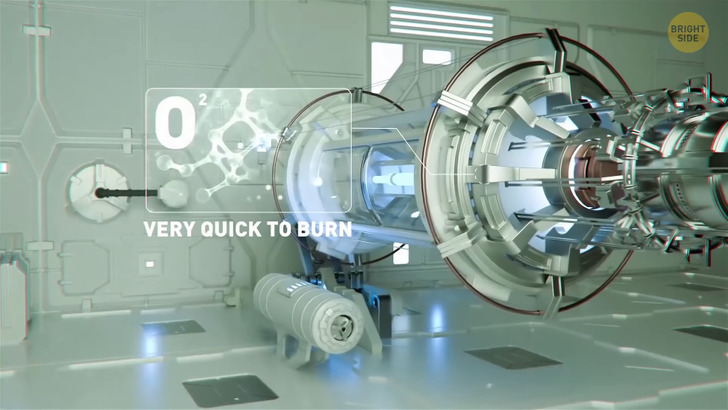
Stars don’t rely on oxygen, so they’re not burning — there are constant thermonuclear reactions going on inside them. So a spaceship can only explode like that if it has a nuclear power plant installed on it. If it doesn’t, then the only special effect you get is a brief flash that disappears in a blink of an eye. Liquid oxygen, which is often on board spaceships, is very quick to burn out in the vacuum of outer space.
As for the boom, oxygen plays a crucial role here too: sound only travels thanks to molecules of air bumping into each other. Since there’s no air in space, the whole scene would be pretty much absolutely silent. And that’s not a bad thing either: just imagine how deafening would the Sun be if the sound could travel in space?
Despite what many sci-fi directors want us to believe, there’s no dark side to the Moon. Our satellite is tidally locked with Earth, meaning it’s always turned to us with one side, while the other always looks away. The Sun is much farther from us than the Moon, and we’re both turning round and round, warming and lighting this side and that in turn. It means that once in every short while, the Moon is lit by the Sun from either side — it’s just that we can’t see it from where we are.
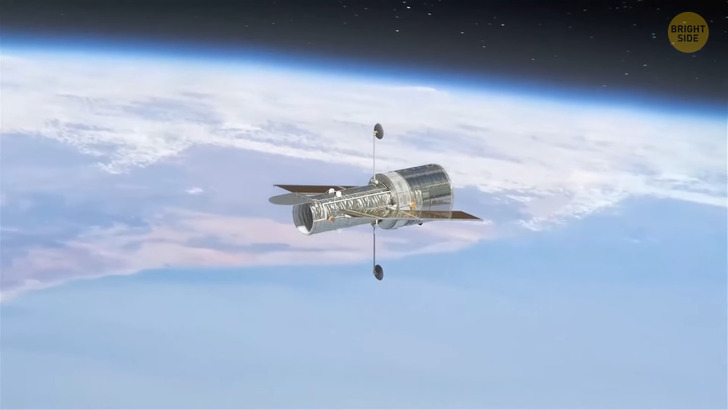
While things appear weightless in outer space, there’s actual gravity all over the place. It becomes weaker the further you get from a heavy object — like our planet — but it’s still there. In fact, there’s not a single place in the Universe that isn’t affected by gravity of this or that cosmic object. Everything that has mass has gravity as well — yes, even you and me!
But space objects are so massive that they tug smaller things towards them. That’s why the planets of the Solar System orbit around the Sun, and our whole Milky Way galaxy orbits around its own center. Scientists believe there’s a supermassive black hole there, about 4 million times heavier than the Sun, which keeps all the stars and systems from flying apart.
Our movie hero leaves the orbit of Mars on their trusty spaceship and heads on towards Jupiter. Their face is grim and determined, even though they know what threat awaits them ahead: the asteroid belt. They pitch and yaw, dodging the asteroid flying at enormous speed towards the spacecraft, but one of them still hits it! No, just a scratch, thankfully. Finally, our hero leaves the danger zone and wipes the sweat from the brow with a shaking hand.
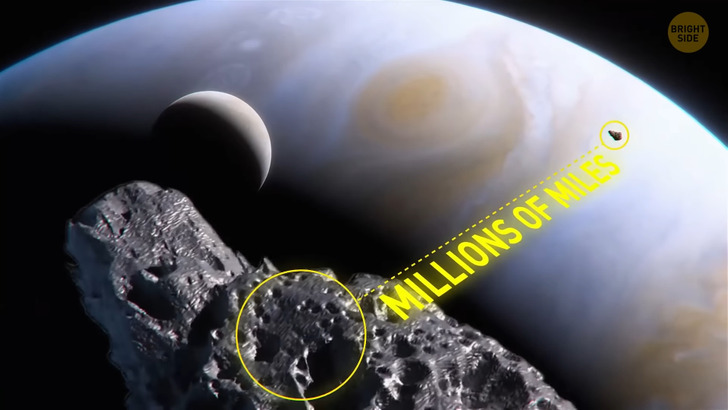
Sounds familiar, but couldn’t be further from the truth. Asteroids in the belt between Mars and Jupiter are so few and far between that if you ever travel through it, you might not even encounter one the whole way. There are about 1.5 million sizeable space rocks flying there, give or take half a million, but let’s not forget space is a vast place. The distance between two asteroids of any significant size would be millions of miles. So a space chase with two ships weaving between floating rocks would be quite boring in there.
Space is often depicted as a black, cold, and desolate place, especially when a movie astronaut leaves the safety of their spaceship. Everything about this description is okay except for the cold part. It’s only true if you find yourself in some really far corner of our galaxy that has no nearby stars. But if you’re, for example, in the Earth’s orbit and directly facing the Sun, the temperature in the cosmic vacuum can reach scorching 250°F.
That’s why spacesuits are white — this color reflects light better than any other. Still, the temperature at your back, which isn’t exposed to the Sun’s rays, can be really freezing indeed. Heat doesn’t spread equally through space, so if you’re not turned towards a heat source, you get very, very cold.
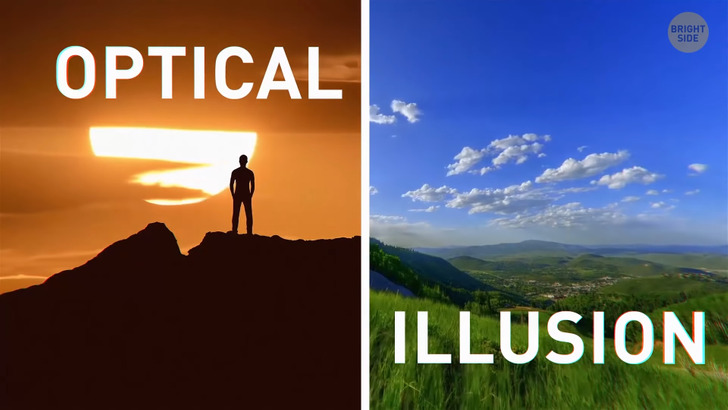
Speaking about the Sun, it somehow always appears yellow in movies. The fact is, the color we see from Earth is an optical illusion created by our planet’s atmosphere — just as the blue sky during the day. The light from the Sun spreads in the atmosphere and gets distorted, making colorful spectacles at dawn and dusk. In the vacuum of space, there’s nothing to refract the light, so the Sun appears as it really is: white. That ball of glowing gas is that hot.
There’s a bright flash in the sky, followed by a tail of smoke, and a red-hot space rock crashes into the ground, leaving a huge charred crater after the impact. Well, although the smoky tail and the crater are partly true, meteorites don’t really have a chance to become that hot while falling. Meteorite is an asteroid that somehow entered the Earth’s atmosphere and survived the friction enough to fall on the surface.
This happens pretty often — we just don’t usually see those rocks because they’re normally quite small and fall into uninhabited areas. But even if one falls within a city, the crater would appear because of the sheer speed of the meteorite, not its heat. They do get much hotter because of friction, yet not so much as to burn everything on the ground on impact.
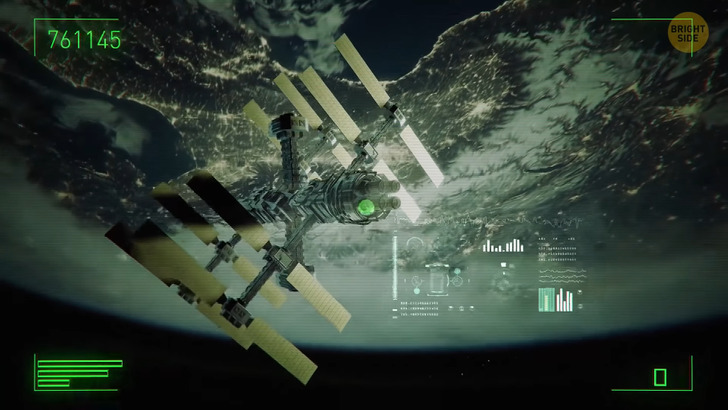
As much as we want to believe in instant communication between spaceships and planets, it’s not possible — at least not yet. Modern communication systems rely on radio signals that have a pretty slow speed compared to the vast expanses of space. It would take years for such a signal to travel even one light year, let alone hundreds and thousands. If you want to send a message to a galaxy far, far away, be prepared to wait for a couple millennia, and then a couple more to receive a reply.
On that note, space is not as crowded and full of events as it’s often shown on silver screen. It’s mostly a rather lonely place where planets, stars, and other objects are separated by billions of miles of nothingness. Even if you have a spaceship that can travel at the speed of light, most of the time you’ll only see black void full of stars and planets far away. The distances are enormous out there even between the closest objects. For better understanding, the Moon, which you can see so well on a clear night, is about 239,000 miles away — that’s like traveling around the Earth almost 10 times in a row.
Warp drives that can distort space-time and get you to a distant corner of an alien galaxy in a blink of an eye — that’s a staple of any space opera. Spaceships capable of such a feat are always shown as instantly accelerating from zero to faster-than-light. According to laws of physics, people on board should, well, at least be pushed into their seats, hard. More strictly speaking, nobody would even be able to survive such an acceleration because it’s just too many g’s on a fragile human body. Until we find a way to reduce the effects of overload, we can’t even start thinking of space warps.

Water isn’t the rarest and most precious resource in the Universe. In fact, there’s a humongous space cloud several million light years away from us that consists entirely of water. Its reserves would be enough to fill all our oceans 140 trillion times over. And many planets, some even in our Solar System, seem to have liquid water on them. The most precious resource in space is life, and that requires a lot more stuff to appear than just liquid water.
Astronauts are often shown working out on the ISS and sci-fi spaceships, and that much is true — they do need physical activity. But the reason isn’t that they need strong bodies to work in space. The gravity out there is much weaker, and astronauts don’t use their muscles as much as on Earth. So when they come back to the surface, gravity hits them as a sledgehammer, and their bodies feel squishy. To alleviate those effects, they train every day.
Although they say we can see millions of stars on a clear starry night, that number is much more modest: about 3,000. All the rest are other objects that are also luminous and mistaken for stars: planets, distant galaxies, and even artificial satellites. They’re simply being illuminated by real stars, just like the Moon, and become seen. But because they’re that far away, we can’t tell if they’re stars or not. Still, you gotta admit, it’s all still pretty cool!











